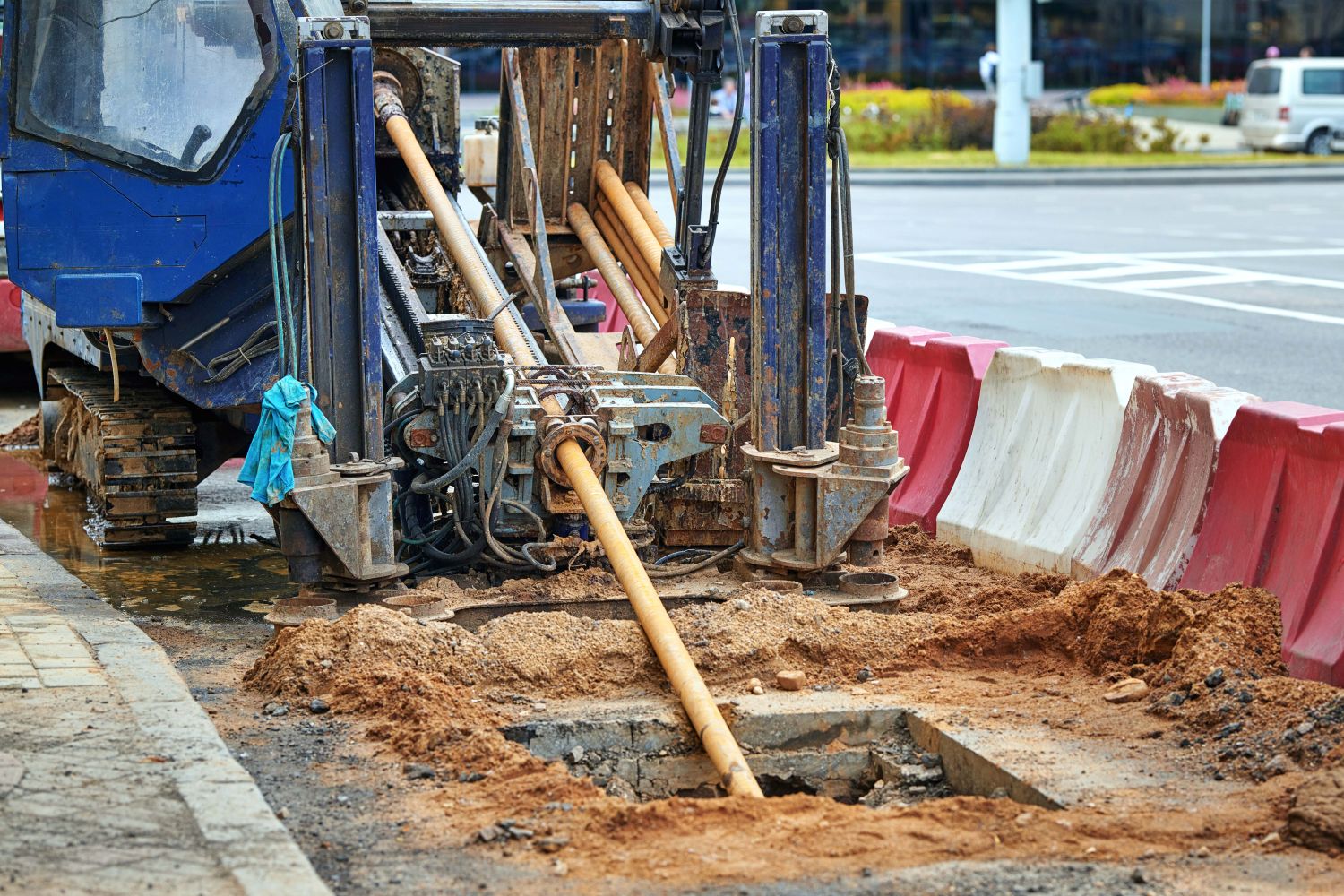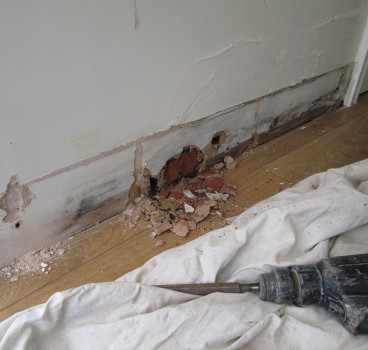Trenchless technologies and unseen network beneath our feet
In the world’s busiest cities, there’s an invisible network that keeps everything running - water, gas, electricity, data and sewage all work beneath our feet in a complex web of buried infrastructure. Yet, as urban populations surge and cities densify, the need to maintain, replace, or install new utilities has become one of the great engineering challenges of the 21st century. Digging up streets is no longer a viable option in most cases because the social, economic and environmental costs are just too high, writes John Ridgeway.
It could explain why trenchless technology, the equivalent of a quiet revolution beneath our pavements, is now well underway in cities across the globe. Instead of tearing up roads and disrupting traffic for weeks, engineers are now using more advanced methods that allow them to install or rehabilitate pipes and conduits with minimal surface disturbance. From horizontal directional drilling to pipe bursting and micro tunnelling, these technologies are transforming the way we build and maintain the unseen systems that make modern life possible.
From trenches to precision engineering
Traditional open-cut trenching has long been the default method for laying or repairing underground utilities. It’s effective but disruptive, bringing road closures, dust, noise and disruption to businesses and residents alike. Trenchless methods turn this process on its head.
The core principle of trenchless technology is simple - access underground utilities through small, strategically placed entry and exit points, rather than digging a continuous trench. However, this shift in philosophy has required significant advances in surveying, navigation, and materials science and over the past few decades, those advances have delivered.
Horizontal directional drilling (HDD), for example, allows engineers to steer a drilling head with incredible precision through soil or rock, guided by GPS and electromagnetic sensors. The pilot hole is drilled along a planned route, then gradually enlarged to accommodate the utility pipe, which is pulled back through the borehole. It’s a process that can extend hundreds of metres under rivers, roads, or railways, all without disturbing what lies above.
The science of controlled destruction
When old utility lines fail or need upgrading, trenchless technology offers another solution - pipe bursting. Rather than excavating the old pipe, engineers insert a bursting head that fractures the existing pipe outward while simultaneously pulling a new, stronger pipe into place.
The technique is as brutal as it is efficient. The bursting head, conical and reinforced, is drawn through the old pipeline by a high-tensile winch or hydraulic system. As it advances, the old pipe shatters and the surrounding soil absorbs the fragments. The new pipe follows directly behind, fitting neatly into the expanded borehole.
The result? A new, high-capacity utility line installed in the exact alignment of the old one, all without the need for extensive excavation or the disposal of large volumes of debris. Pipe bursting has become especially valuable in densely built areas, where space and access are limited, and where the environmental impact of traditional excavation would be unacceptable.
Micro tunnelling and the age of automation
Another key trenchless innovation, micro tunnelling, brings automation and robotics to underground construction. Unlike conventional tunnelling, which often requires operators to be underground, micro tunnelling uses remotely controlled boring machines guided from the surface.
These machines can maintain precise line and grade, critical for gravity-dependent systems such as sewer networks. Guided by laser systems and supported by real-time data, they can bore through challenging ground conditions with minimal deviation. Slurry systems remove excavated material while maintaining pressure to prevent collapse, a sophisticated combination of fluid dynamics, mechanics and controlled engineering.
Micro tunnelling’s accuracy makes it invaluable for urban infrastructure, where deviations could interfere with existing utilities or foundations. Its ability to create long, continuous tunnels with minimal surface access points means cities can replace or expand sewer and drainage networks with almost no disruption to daily life.
Why trenchless matters
Beyond the technical brilliance, trenchless technologies carry profound implications for urban sustainability. The social and environmental benefits are tangible. Reduced excavation means fewer lorry movements, less air pollution, lower noise levels and minimal traffic disruption. For local businesses and residents, it means life goes on almost uninterrupted.
For city planners and utility companies, the benefits are strategic. With cities growing vertically and horizontally, access to underground space is becoming an increasingly valuable commodity. Trenchless methods maximise the use of that space by enabling precise installation and maintenance even in crowded utility corridors.
Additionally, trenchless solutions extend the lifespan of existing infrastructure. Rehabilitation methods such as cured-in-place pipe (CIPP) lining allow damaged pipes to be renewed internally without removal, a process akin to fitting a new lining inside an old shell. The result is enhanced durability, improved flow, and reduced leakage, contributing directly to the resilience of critical networks.
Engineering for resilience
The growing emphasis on resilience, the ability of infrastructure to withstand shocks, whether from ageing, climate events, or urban stress, has brought trenchless technologies to the forefront. Extreme weather events are placing new demands on drainage and utility networks. Meanwhile, the pressure to meet sustainability goals has pushed the industry to find ways to repair and replace systems without unnecessary carbon expenditure.

Trenchless technology offers an elegant response. The reduced need for excavation means lower embodied carbon and minimal disruption to green spaces and habitats. Moreover, many trenchless systems can be adapted for renewable energy infrastructure, such as geothermal loops or district heating systems, thus future-proofing cities for the transition to a low-carbon economy.
Digital precision and the next frontier
As digital tools advance, the capabilities of trenchless construction continue to expand. Real-time mapping, LiDAR scanning and AI-powered modelling now allow engineers to “see” below ground with unprecedented clarity. These digital twins of urban utility networks make planning safer, faster, and more efficient.
Machine learning is also entering the field. Predictive analytics can assess the condition of ageing infrastructure, identifying which sections are at greatest risk of failure and thus where trenchless repairs can deliver maximum value. Automated drilling systems, meanwhile, are reducing human error, enhancing safety and increasing accuracy in complex projects.
Looking forward, the convergence of trenchless engineering with smart city technology promises a new era of invisible infrastructure with systems that not only function unseen, but also communicate, monitor and self-report their condition in real time.
For all its sophistication, the beauty of trenchless technology lies in its subtlety. It is the art of doing more by showing less - of keeping cities running without tearing them apart. As urban populations continue to swell and as demands on our underground utilities intensify, these technologies will only grow in importance.
What was once a niche technique for specialist projects has become a mainstream necessity for sustainable urban development. Trenchless technologies are not merely tools - they are enablers of a new mindset - one that values efficiency, minimalism and foresight.
The next time you walk through a city street humming with life above ground, remember that beneath your feet lies a silent world of engineering innovation - a network constantly evolving, adapting and renewing itself. The unseen network is the backbone of modern civilisation and trenchless technology is how we keep it alive without ever breaking the surface.
Additional Blogs

How construction can cut Its carbon footprint by caring for soil
Soil is often dismissed as mere dirt, but it is one of the planet’s most powerful carbon stores, holding more than all of the world’s forests combined. Yet in our rush to build, pave and develop, we...
Read moreWhat is bridging damp? How it happens and how to fix it
Bridging damp happens when moisture finds a path around the building’s damp-proof course (DPC) so it reaches your internal walls and skirting. If you see damp patches rising above the skirting or...
Read more

The silent death of the fixed-price contract
For decades, the fixed-price contract has been the backbone of construction procurement. It promised certainty with a defined scope, an agreed sum and a clear transfer of risk from client to...
Read more